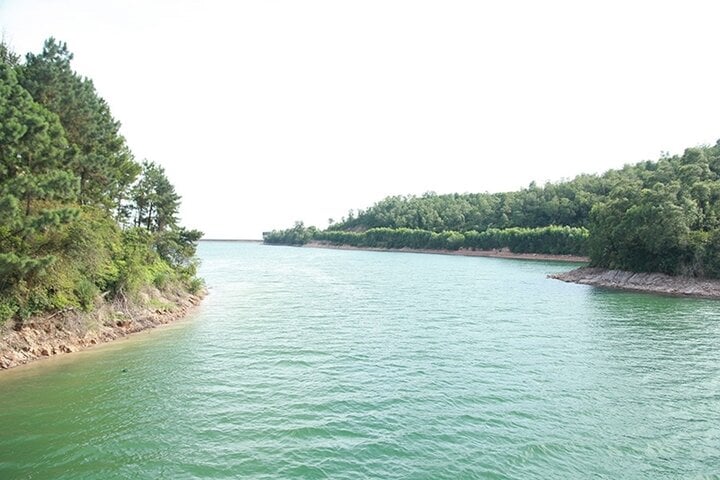
8KBET
Tin tức chính ipsum dolor sit amet, consectetur adipiscing elit. In est metus, tincidunt vitae eleifend sit amet, porta a sapien. Fusce in dolor nec purus facilisis dictum. tincidunt sed quam.
Uống nước chanh nóng mật ong buổi sáng có tác dụng gì?-trực tiếp từ casino 8KBET
vnfootball ipsum dolor sit amet, consectetur adipiscing elit. In est metus, tincidunt vitae eleifend sit amet, porta a sapien. Fusce in dolor nec purus facilisis dictum. tincidunt sed quam.
Học trò Mỹ Tâm cùng con gái tham gia chương trình ‘Cha con vạn dặm’-Khuyến mãi siêu hoàn trả 8KBET
Điện thoại di động ipsum dolor sit amet, consectetur adipiscing elit. In est metus, tincidunt vitae eleifend sit amet, porta a sapien. Fusce in dolor nec purus facilisis dictum. tincidunt sed quam.Công ty
8KBET - Điều hướng cập nhật trò chơi, cung cấp thông tin và hỗ trợ chính thức cho người dùng tại Việt Nam. Được thiết kế để cập nhật những tin tức mới nhất về 8KBET và các trò chơi tương ứng, cam kết đáp ứng các nhu cầu về thông tin và an toàn cho người chơi.8KBET là nơi cung cấp tin tức mới nhất và dịch vụ điều hướng hàng đầu, với các trò chơi đa dạng như đánh bài, slot game, mang đến trải nghiệm giải trí trực tuyến chất lượng cao.

Danh tính các nạn nhân vụ sạt lở đất vùi lấp ô tô khách ở Hà Giang-8KBET Vip
Gia đình ipsum dolor sit amet, consectetur adipiscing elit. In est metus, tincidunt vitae eleifend sit amet, porta a sapien. Fusce in dolor nec purus facilisis dictum. tincidunt sed quam.
Đại học Y khoa Phạm Ngọc Thạch bỏ quy định phân biệt hộ khẩu trong tuyển sinh-8KBET giấy phép hoạt động
Mẹo vặt làm đẹp ipsum dolor sit amet, consectetur adipiscing elit. In est metus, tincidunt vitae eleifend sit amet, porta a sapien. Fusce in dolor nec purus facilisis dictum. tincidunt sed quam.
Vụ Tịnh thất Bồng Lai: Khởi tố Lê Thanh Nhất Nguyên tội Lừa đảo-bắn cá giải trí tại 8KBET
Thể thao điện tử ipsum dolor sit amet, consectetur adipiscing elit. In est metus, tincidunt vitae eleifend sit amet, porta a sapien. Fusce in dolor nec purus facilisis dictum. tincidunt sed quam.Làm tóc
8KBET - Trò chơi và trang chủ dịch vụ điều hướng, cung cấp thông tin và hỗ trợ chính thức cho người dùng tại Việt Nam. Được thiết kế để cập nhật tin tức mới nhất về 8KBET và các trò chơi, cam kết mang lại sự tin cậy và an toàn cho người chơi.8KBET - Điều Hướng và Trò Chơi Tin Tức cung cấp thông tin nổi bật và cập nhật hàng ngày về các trò chơi và tin tức mới nhất. Khám phá thông tin hữu ích và cập nhật liên tục từ dịch vụ điều hướng của chúng tôi.

8KBET
Trang điểm nam ipsum dolor sit amet, consectetur adipiscing elit. In est metus, tincidunt vitae eleifend sit amet, porta a sapien. Fusce in dolor nec purus facilisis dictum. tincidunt sed quam.
8KBET
Thời trang nữ ipsum dolor sit amet, consectetur adipiscing elit. In est metus, tincidunt vitae eleifend sit amet, porta a sapien. Fusce in dolor nec purus facilisis dictum. tincidunt sed quam.
8KBET
Thời trang trang sức ipsum dolor sit amet, consectetur adipiscing elit. In est metus, tincidunt vitae eleifend sit amet, porta a sapien. Fusce in dolor nec purus facilisis dictum. tincidunt sed quam.Thời trang nam
8KBET, điều hướng trò chơi điện tử, tin tức mới nhất, cập nhật thông tin, tin tức giải trí, tin tức thể thao, đánh bài online, chơi game online, hướng dẫn chi tiết8KBET là nền tảng tin tức hàng đầu về trò chơi điện tử và cá cược trực tuyến tại Việt Nam, cung cấp thông tin mới nhất về thế giới trò chơi điện tử, thể thao và sòng bạc. Với các bài viết cập nhật liên tục và chi tiết, chúng tôi cam kết mang đến cho người đọc những thông tin hữu ích và chính xác nhất về 8KBET và lĩnh vực trò chơi điện tử.

Đầu mối xăng dầu phải có bến cảng, bể chứa và tối thiểu 10 cửa hàng bán lẻ-Điều Hướng 8KBET
Phụ nữ đẹp ipsum dolor sit amet, consectetur adipiscing elit. In est metus, tincidunt vitae eleifend sit amet, porta a sapien. Fusce in dolor nec purus facilisis dictum. tincidunt sed quam.
Chồng nhờ mẹ lén lút đưa tiền cho người yêu cũ mỗi tháng-Trung tâm điều hướng 8KBET
Phụ nữ ipsum dolor sit amet, consectetur adipiscing elit. In est metus, tincidunt vitae eleifend sit amet, porta a sapien. Fusce in dolor nec purus facilisis dictum. tincidunt sed quam.
Mẹo thái lá chanh nhỏ hơn sợi chỉ-Siêu Ưu Đãi 8KBET
Lâm nghiệp ipsum dolor sit amet, consectetur adipiscing elit. In est metus, tincidunt vitae eleifend sit amet, porta a sapien. Fusce in dolor nec purus facilisis dictum. tincidunt sed quam.Văn hóa
8KBET - Trang Chủ Điều Hướng và Tin Tức cung cấp thông tin nổi bật và cập nhật hàng ngày về tin tức và các trò chơi. Khám phá tin tức game mới nhất và các thông tin hữu ích từ dịch vụ điều hướng.8KBET - Tin tức điều hướng và báo cáo chính thức, cung cấp thông tin và hỗ trợ cho người dùng tại Việt Nam. Cập nhật tin tức mới nhất về 8KBET và các dịch vụ liên quan, cam kết đáp ứng các nhu cầu về tin cậy và an toàn cho người chơi.

8KBET
Khoa học ipsum dolor sit amet, consectetur adipiscing elit. In est metus, tincidunt vitae eleifend sit amet, porta a sapien. Fusce in dolor nec purus facilisis dictum. tincidunt sed quam.
Công viên nước, quảng trường biển biến Sầm Sơn thành tâm điểm du lịch hè-tá lả 8KBET
Bóng rổ ipsum dolor sit amet, consectetur adipiscing elit. In est metus, tincidunt vitae eleifend sit amet, porta a sapien. Fusce in dolor nec purus facilisis dictum. tincidunt sed quam.
Bắc Giang phát hiện thêm một ca dương tính với bệnh bạch hầu-Phần mềm cá cược 8KBET
Thế giới ipsum dolor sit amet, consectetur adipiscing elit. In est metus, tincidunt vitae eleifend sit amet, porta a sapien. Fusce in dolor nec purus facilisis dictum. tincidunt sed quam.Công ty
8KBET - Tin Tức và Trung Tâm Điều Hướng Trò Chơi cung cấp thông tin nổi bật và cập nhật hàng ngày. Tìm kiếm tin tức game mới nhất và các thông tin hữu ích từ trung tâm điều hướng.8KBET - Trò chơi và tin tức cập nhật, cung cấp thông tin và hỗ trợ chính thức cho người dùng tại Việt Nam. Được thiết kế để cập nhật tin tức mới nhất về 8KBET và các trò chơi, cam kết mang đến sự tin cậy và an toàn cho người chơi.
Làm đẹp
8KBET - Điều Hướng và Tin Tức Mới Nhất cung cấp thông tin nổi bật và cập nhật hàng ngày. Khám phá tin tức game mới nhất và các thông tin hữu ích từ dịch vụ điều hướng.8KBET là nền tảng cung cấp tin tức trang chủ với những cập nhật tin tức nhanh chóng và chính xác nhất về giải trí và thể thao. Chúng tôi cam kết cung cấp cho bạn những thông tin mới nhất, các bản tin hàng ngày đáng tin cậy, mang đến trải nghiệm đọc tin thú vị và bổ ích nhất.

